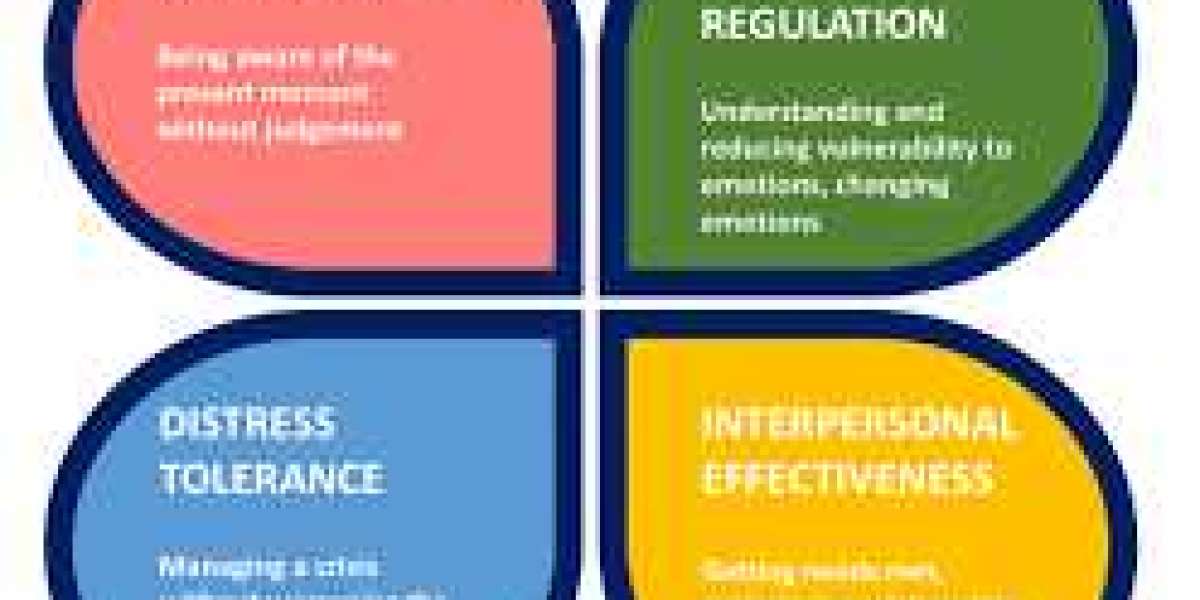Dialectical Behavior Therapy (DBT) is a powerful, evidence-based form of psychotherapy that has transformed the lives of countless individuals struggling with emotional regulation, self-destructive behaviors, and interpersonal difficulties. Originally developed by Dr. Marsha Linehan in the late 1980s to treat borderline personality disorder (BPD), DBT has since proven effective for a wide range of mental health conditions, including depression, anxiety, eating disorders, and substance abuse. But what exactly is DBT, and how does it work? In this comprehensive guide, we’ll explore the principles, techniques, and benefits of DBT and how it can help you or a loved one achieve emotional balance and a more fulfilling life.
What is Dialectical Behavior Therapy (DBT)?
Dialectical Behavior Therapy is a type of Cognitive Behavioral Therapy (CBT) that combines traditional CBT techniques with mindfulness practices. The term "dialectical" refers to the integration of opposites—specifically, acceptance and change. DBT teaches individuals to accept their current reality while simultaneously working toward positive change. This balance is at the core of DBT and is what sets it apart from other therapeutic approaches.
DBT is structured around four key modules: mindfulness, distress tolerance, emotion regulation, and interpersonal effectiveness. These modules are designed to help individuals develop skills to manage intense emotions, improve relationships, and build a life worth living.
The Four Modules of DBT
Mindfulness
Mindfulness is the foundation of DBT. It involves being fully present in the moment observing your thoughts and feelings without judgment. By practicing mindfulness, individuals learn to detach from overwhelming emotions and gain greater control over their reactions. Mindfulness exercises, such as deep breathing, meditation, and body scans, are often incorporated into DBT sessions.Distress Tolerance
Life is full of challenges, and distress tolerance skills help individuals cope with difficult situations without resorting to harmful behaviors. Techniques such as self-soothing, distraction, and radical acceptance are taught to help individuals navigate crises and emotional pain.Emotion Regulation
Many people struggle with intense, fluctuating emotions that feel impossible to manage. DBT provides tools to identify, understand, and regulate emotions. Skills like identifying triggers, reducing vulnerability to negative emotions, and increasing positive experiences are emphasized.Interpersonal Effectiveness
Healthy relationships are essential for emotional well-being, but they can be challenging to maintain. DBT teaches individuals how to communicate effectively, set boundaries, and assert their needs while maintaining self-respect and respect for others.
Who Can Benefit from DBT?
While DBT was initially developed for individuals with borderline personality disorder, its applications have expanded significantly. DBT is now used to treat a variety of mental health conditions, including:
Depression: DBT helps individuals break free from negative thought patterns and develop healthier coping mechanisms.
Anxiety: By learning mindfulness and distress tolerance skills, individuals can reduce anxiety and manage panic attacks.
Eating Disorders: DBT addresses the emotional and behavioral aspects of eating disorders, promoting healthier relationships with food and body image.
Substance Abuse: DBT equips individuals with skills to resist cravings, manage triggers, and build a sober lifestyle.
PTSD: DBT can help individuals process trauma and reduce symptoms of post-traumatic stress disorder.
DBT is also beneficial for anyone struggling with emotional dysregulation, self-harm, suicidal thoughts, or relationship difficulties.
How Does DBT Work?
DBT typically involves a combination of individual therapy, group skills training, phone coaching, and therapist consultation teams. Here’s a breakdown of each component:
Individual Therapy
In one-on-one sessions, clients work with a trained DBT therapist to address personal challenges, set goals, and apply DBT skills to real-life situations. Therapists provide validation and support while encouraging clients to take responsibility for their actions.Group Skills Training
Group sessions focus on teaching and practicing the four DBT modules. Participants learn from each other’s experiences and receive feedback from the group leader. These sessions are highly structured and emphasize skill-building.Phone Coaching
DBT therapists often provide phone coaching between sessions to help clients apply skills in real time. For example, if a client is experiencing a crisis, they can call their therapist for guidance on using distress tolerance techniques.Therapist Consultation Teams
DBT therapists participate in consultation teams to ensure they provide the highest quality care. These teams offer support, feedback, and ongoing training to therapists.
The Science Behind DBT
Numerous studies have demonstrated the effectiveness of DBT. Research shows that DBT reduces suicidal behavior, self-harm, and hospitalizations while improving emotional regulation and overall quality of life. For example, a study published in the Journal of Consulting and Clinical Psychology found that DBT significantly reduced suicidal ideation and depression in individuals with borderline personality disorder.
DBT’s success lies in its holistic approach. By addressing both the cognitive and emotional aspects of mental health, DBT helps individuals create lasting change. The integration of mindfulness practices also sets DBT apart, as it encourages individuals to develop a nonjudgmental awareness of their thoughts and feelings.
Real-Life Applications of DBT
DBT isn’t just a theoretical framework—it’s a practical toolkit for everyday life. Here are some examples of how DBT skills can be applied:
Managing Anger: Instead of lashing out in anger, a person might use mindfulness to pause and observe their emotions, then apply distress tolerance techniques to calm down.
Improving Communication: By practicing interpersonal effectiveness skills, individuals can express their needs clearly and resolve conflicts constructively.
Coping with Grief: DBT’s emotion regulation skills can help individuals process grief and find meaning in loss.
Overcoming Procrastination: Mindfulness can help individuals stay focused, while distress tolerance skills can help them push through discomfort and complete tasks.
How to Get Started with DBT
If you’re interested in DBT, the first step is to find a qualified therapist. Look for a licensed mental health professional with specialized training in DBT. Many therapists offer both individual and group sessions, so you can choose the format that works best for you.
Before starting DBT, it’s important to set clear goals. What do you hope to achieve through therapy? Whether it’s reducing self-harm, improving relationships, or managing anxiety, having a clear vision will help you stay motivated.
Tips for Success in DBT
Commit to the Process
DBT requires time, effort, and dedication. Be prepared to attend sessions regularly, complete homework assignments, and practice skills consistently.Be Patient with Yourself
Change doesn’t happen overnight. Celebrate small victories, and don’t be discouraged by setbacks.Practice Mindfulness Daily
Incorporate mindfulness into your daily routine. Even a few minutes of mindfulness practice can make a difference.Reach Out for Support
Don’t hesitate to use phone coaching or lean on your support network when you’re struggling.Stay Open-Minded
DBT may challenge some of your beliefs and behaviors. Approach the process with curiosity and a willingness to learn.
Common Misconceptions About DBT
Despite its growing popularity, there are still some misconceptions about DBT. Let’s debunk a few of them:
DBT is Only for Borderline Personality Disorder
While DBT was originally designed for BPD, it’s now used to treat a wide range of conditions.DBT is Just About Talking
DBT is a skills-based therapy that involves active participation and practice.DBT is a Quick Fix
DBT is a long-term commitment that requires ongoing effort and practice.DBT is Only for Severe Cases
DBT can benefit anyone looking to improve their emotional regulation and interpersonal skills.
The Long-Term Benefits of DBT
The skills learned in DBT have lifelong benefits. Individuals who complete DBT often report the following:
Improved emotional regulation
Healthier relationships
Reduced self-destructive behaviors
Greater self-awareness
Increased resilience
By equipping individuals with practical tools to navigate life’s challenges, DBT empowers them to build a life worth living.
Conclusion
Dialectical Behavior Therapy is a transformative approach to mental health that combines acceptance and change. Whether you’re struggling with emotional dysregulation, relationship difficulties, or self-destructive behaviors, DBT offers practical tools to help you achieve balance and fulfillment. By committing to the process and practicing the skills, you can create lasting change and transform your mental health.







